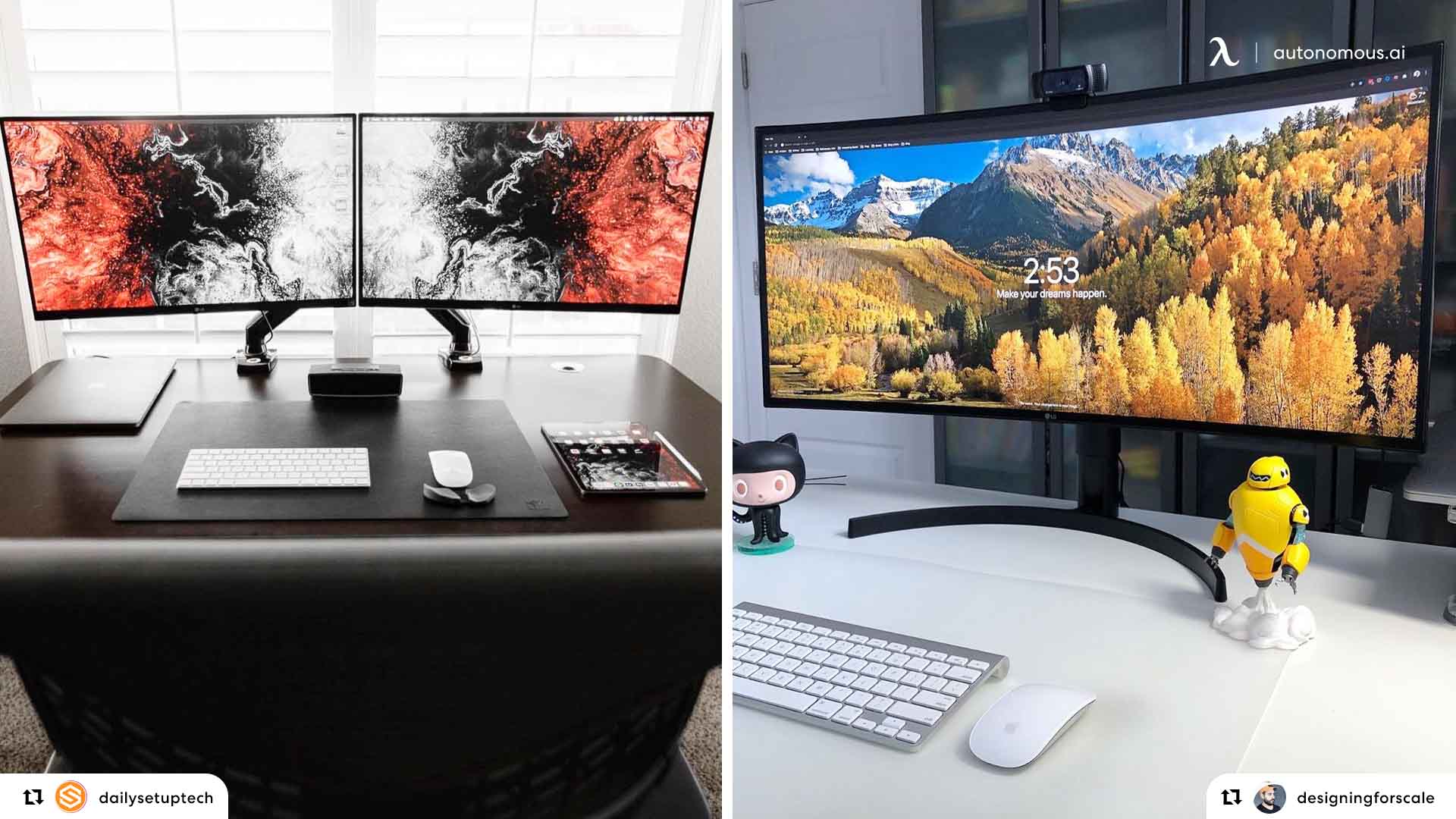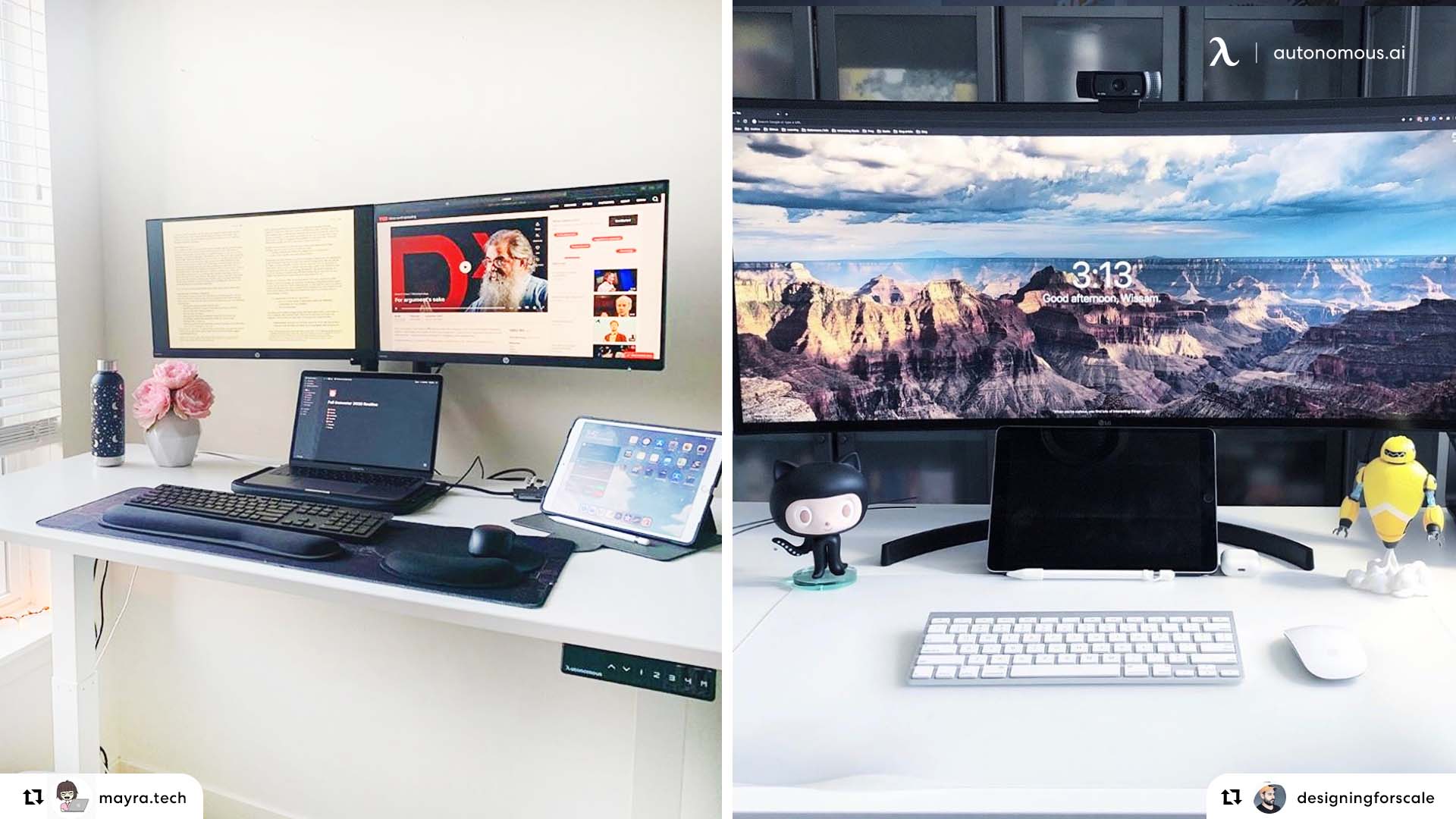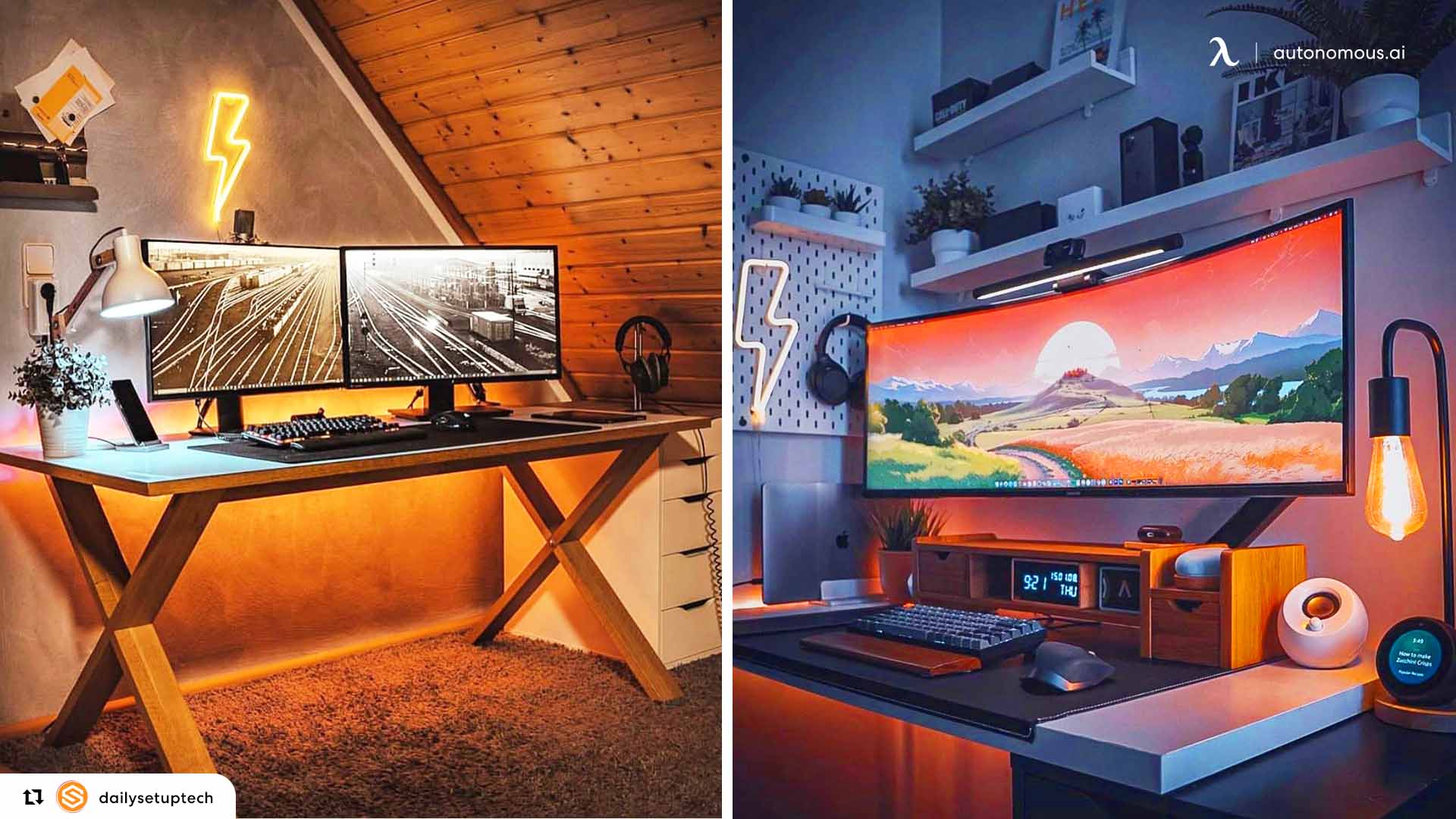/https://storage.googleapis.com/s3-autonomous-upgrade-3/static/upload/images/new_post/designer-debacle-dual-monitor-vs-ultrawide-for-productivity-how-to-choose-817.jpg)
Designer Debacle: Dual Monitor Vs Ultrawide for Productivity – How to Choose
While it may not be too hard for you to choose your standing desk or office chair, your monitor setup can be very challenging. You may find yourself looking at design ideas to help make the burden of choice a little easier. As far as screens are concerned, you have the setup options of dual monitor vs ultrawide for productivity.
Do you go with two monitors or one very wide one when you want greater screen real estate? As a designer, a standard monitor size isn't going to cut it. However, you need to know what to consider to achieve the greatest level of productivity. Without any further ado, here's some expert information that should help you could choose between an ultrawide or dual monitor setup.
Comparison of Dual Monitor Vs Ultrawide for Productivity – The Bezel Gap

If you're not familiar with the term "bezel gap," it refers to the small space between the two monitors that make up a dual monitor configuration. Even if the monitors are touching each other, there is a noticeable gap where both screens meet. While that's a downside for those with two screens, it's where the ultrawide monitor alternative excels. That's because you get one large screen with a continuous view.
You want to be creating pixel-perfect designs, don't you? If that's the case, it's probably better for you to have everything on a single screen to avoid distortion. Remember that different screens tend to have different display properties. Therefore, as you move things across, inconsistencies are bound to pop up because of display differences.
Dedicated Secondary Task Screen

While having your dual monitors set to "extended" mode only provides you with extra space, it genuinely feels like you have two desktops to work with. One of the greatest benefits of that is assigning a primary and secondary screen for your tasks. That means you can do all your designing on the first screen while managing things, such as your music and social media pages from the second one.
It's convenient because you never have to minimize your work to take a glance at the other things. It's a more comfortable way to work in multiple windows, instead of using the Windows snap feature on a single screen.
The Price

When considering an ultrawide or dual monitor setup, cost plays a major part in your decision. How are you going to buy something that's out of your budget? No one can definitively say that the cheaper or more expensive option is better. Nevertheless, knowing the cost helps you to weigh the feasibility of each choice.
A dual monitor setup consists of two traditional monitors, while the ultrawide monitor setup features one very large monitor. Though ultrawide monitors are more expensive than their traditional counterparts, the cost of the two traditional monitors typically outweighs that of a single ultrawide one.
So, now you need to ask yourself if you want to save some money and have one wider screen or spend that money on two normal-sized screens that work together.
Aspect Ratio

While the aspect ratio difference is most noticeable when watching movies, there is no telling how your designs can benefit from a greater one. A traditional monitor uses a 16:9 aspect ratio, while an ultrawide monitor uses a 21:9 one.
What difference does this make? Think of watching a movie at the cinema versus watching it on your PC screen at home. You are likely to experience letterboxing on the screen at home, which refers to the black areas above and below the picture. Cinema displays don't have this problem, thanks to the aspect ratio, which means nothing on the display needs to be scaled down.
Therefore, you have the freedom to create your designs in breathtaking detail if you opt for an ultrawide screen.
Compatibility of Dual Monitor and Ultrawide Monitor

The final area of discussion is the matter of compatibility. it's time for you to picture something. Imagine one day you have a breakthrough design idea in your head. You walk up to your adjustable standing desk, you turn on your computer, and you start the new design program you just bought. Unfortunately, it's not compatible with your ultrawide screen.
Traditional monitors don't have this problem at all, but you may not necessarily need to worry, even if you have an ultrawide screen. Most modern design programs are built to support larger aspect ratios and resolutions.
It's a good idea for you to be on the safe side. Before you choose to purchase an ultrawide monitor, take an inventory of the programs you plan to use in your design adventures. Once the screen isn't an obstacle, you can go for it. Note, however, that this consideration is a non-factor with a dual-screen setup.
Subscribe for a 10% discount on your first order.
Sign up for our weekly update and be the first to know about our specials & promotions.
Faire connaitre

/https://storage.googleapis.com/s3-autonomous-upgrade-3/production/ecm/240409/smartdesk-one-apr-2024-offer-1920x540-CTA.jpg)
/https://storage.googleapis.com/s3-autonomous-upgrade-3/production/ecm/240409/smartdesk-one-apr-2024-offer-720x1200-CTA.jpg)
/https://storage.googleapis.com/s3-autonomous-upgrade-3/production/ecm/240415/bulk-order-apr-2024-offer-720x1200-CTA-min.jpg)
/https://storage.googleapis.com/s3-autonomous-upgrade-3/production/ecm/240415/pod-offer-apr-2024-720x1200-CTA.jpg)
/https://storage.googleapis.com/s3-autonomous-upgrade-3/static/upload/images/new_post_author/admin-1.png)